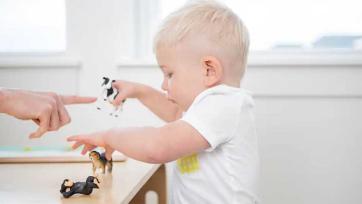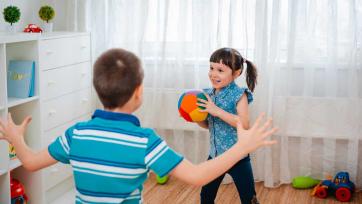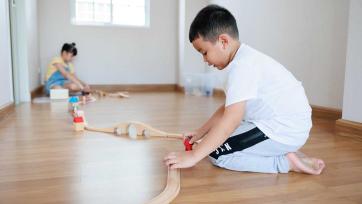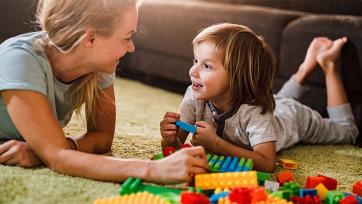It's no secret that kids love shiny things. They all seem drawn to things that flash and shine, from cars to video games. This is why it's so essential for brands to target children regarding marketing. After all, their parents are usually the ones footing the bill. But how do you do that without coming across as cheesy or intrusive? Check out these tips for crafting kid-friendly marketing campaigns. You won't regret it!

Creative pursuits
Many kids love creating things with their hands, whether painting, jewellery or even sculpting. Some kids may be drawn to creative pursuits because they see creativity as a way to express themselves and connect with others. While there are many different creative pursuits out there for children to enjoy, here are five of the most popular:
1. Art
This might be the most popular creative pursuit for kids. Whether they're budding artists or just starting, art is an excellent way for them to learn about colours, shapes and composition. There are many different types of art to explore, from traditional paintings and sculptures to photography and video art. If your child is interested in pursuing an artistic career one day, encouraging them in their endeavours is critical!
2. Music
Music can be incredibly therapeutic for children, providing them with an outlet for all their emotions. Music can create a sense of community among kids who share common interests, whether playing instruments or singing along with songs. Playing music together can also help foster close relationships between siblings or friends. If your child loves music but has yet to gain formal training or experience playing an instrument, plenty of lessons will cater to their skill level.
3. Cooking
Cooking can be fun and educational at the same time! Learning how to prepare food from scratch can give children a deep understanding of the ingredients they use and
Dance parties
Regarding kids' favourite things, there's no debate that they love to dance! Whether shaking their booty to the latest pop tune or limbering up for their next recital, parties and dances are always a hit. Here are some fun ways to celebrate with your kiddos and keep them entertained all night!
Cuddles
Kids love to be hugged and cuddled. It's a natural way for them to feel comforted and loved. There are many different ways to hug kids, and the best way to find out what your child enjoys is to ask! Here are some ideas for hugging kids:
1. Give your kid a big hug from behind - this will make them feel secure and loved.
2. Hug them from the side - this will give you more access to their head and neck, which can be exceptionally comforting for kids who suffer from anxiety or depression.
3. Give them a high-five instead of a traditional hug - this will get their adrenaline flowing and make them happy!
4. Put your hands around their waist - this will provide extra stability while hugging your kid, making it perfect for toddlers who might be unsteady on their feet.
Best friends
Kids love spending time with their best friends more than anything else. Whether playing together or talking, these kids know nothing is as good as friendship. Here are some of the best things kids love to do with their besties:
-Share secrets
-Make movies and play pretend
-Go on adventures
-Sing together
-Shop together
-Play tag
Structure
The findings of research conducted by Common Sense Media indicate that playing is the most popular activity among children. Nearly three-quarters of kids (72%) say that playing is one of their favourite things about being a kid. In addition, almost half of all parents (47%) say that their children spend most of their time playing together.
Regarding what kids love most, there's no denying that they love to play! However, there are plenty of other things that they enjoy, too, like exploring new places or learning new things. Consider these ideas if you need help with Christmas presents for your kids.
Photos and stories
Kids love to have fun and explore their surroundings. They love to see things others don't, and they love to be creative. Here are some photos of kids enjoying the activities they enjoy the most.
Cooking
Interestingly, what kids love most is only sometimes what we think they will. In fact, according to a recent study, cooking ranked as the number one hobby for children aged 8-14 years old! In addition, almost half of all boys aged 8-14 say they would like to be a chef when they grow up, while only a quarter of girls say the same.
So why are cooking and baking so popular with kids? These activities inspire creativity and give kids control over their surroundings. Plus, there's something about making something from scratch that feels satisfying!
There is no shortage of entertaining recipes to use in a family culinary endeavour. Here are five easy family recipes to get you started:
1. Spaghetti Carbonara Casserole: This creamy casserole is perfect for busy weeknights! It won't take long to whip up, and you can double the recipe if necessary.
2. Pizza Party Quiche: This is perfect for a fun pizza party! It's light and fluffy and will disappear quickly at any party.
3. Pepperoni Pizza Sliders: When time is of the essence, or you want something simple, these slider pizzas are the way to go. Pizza dough may be baked in a hot oven until it's crisp
.








